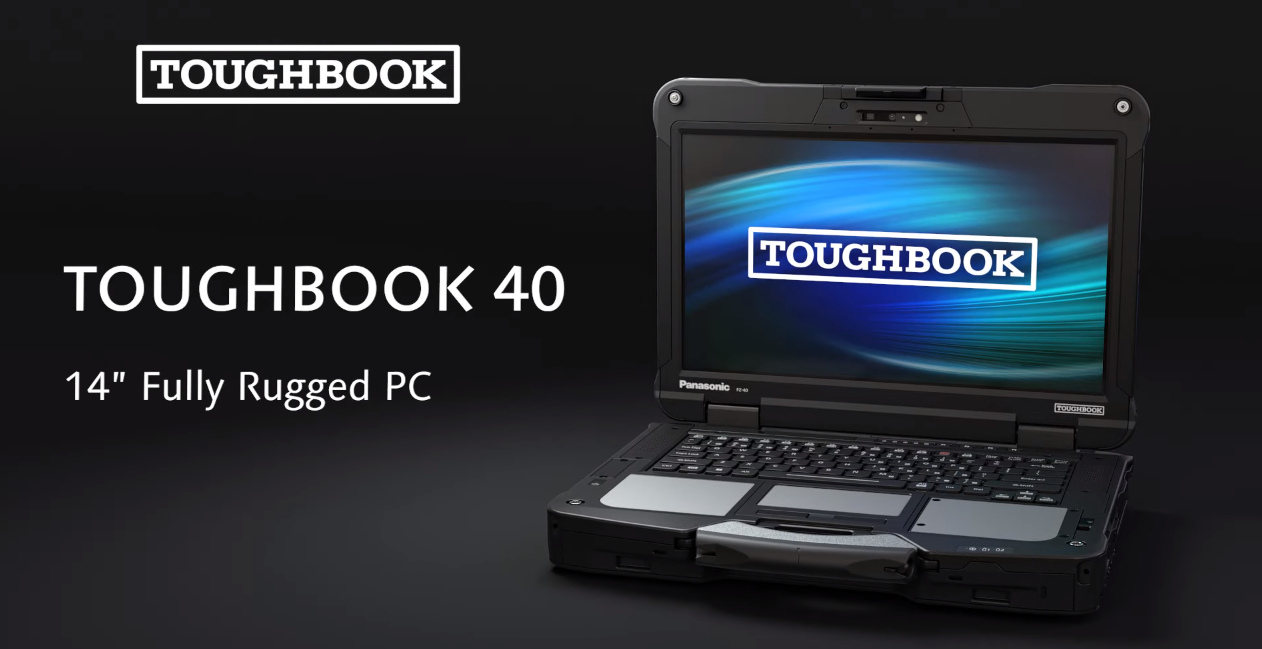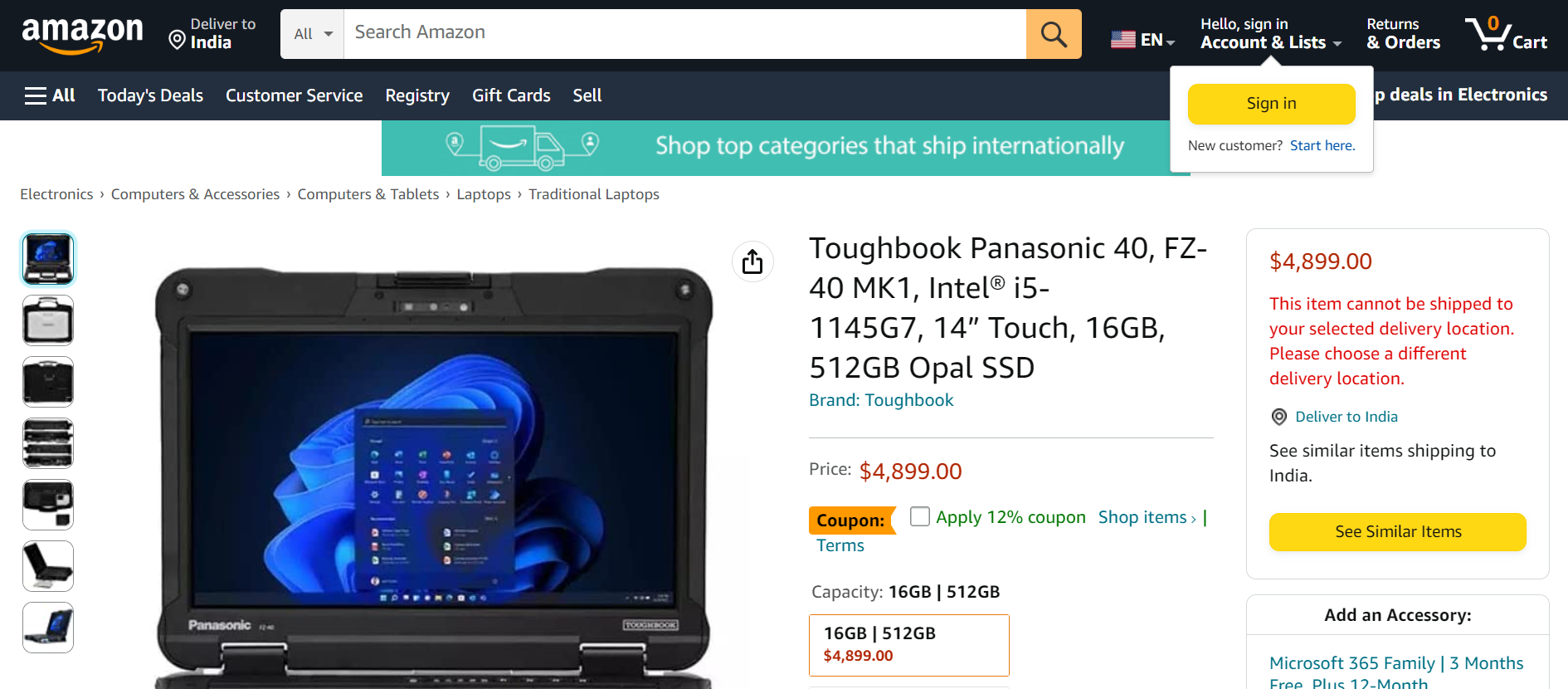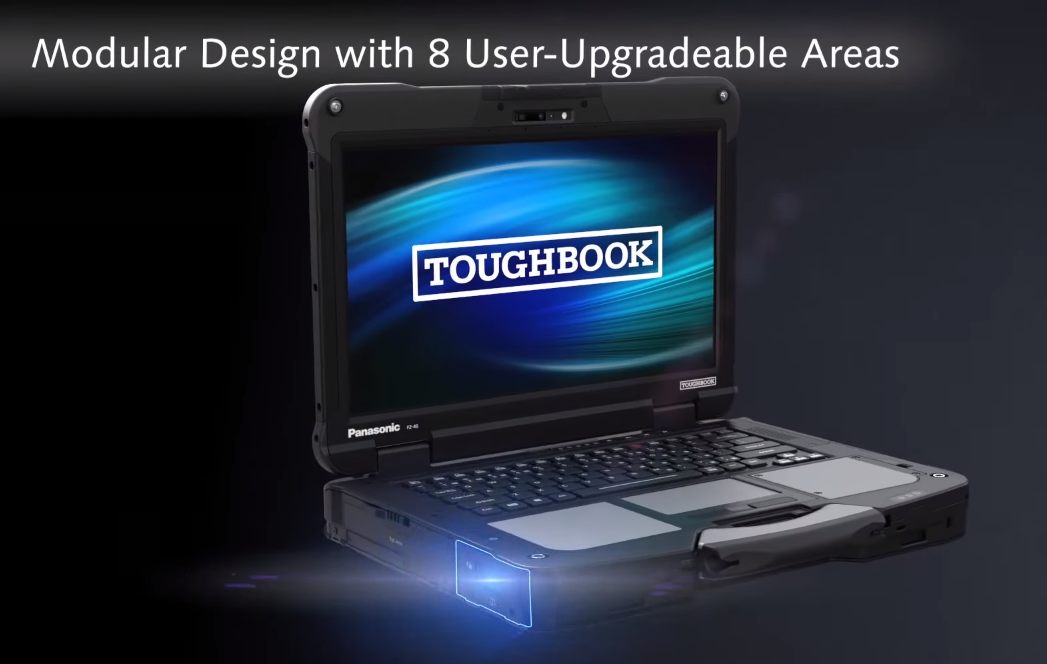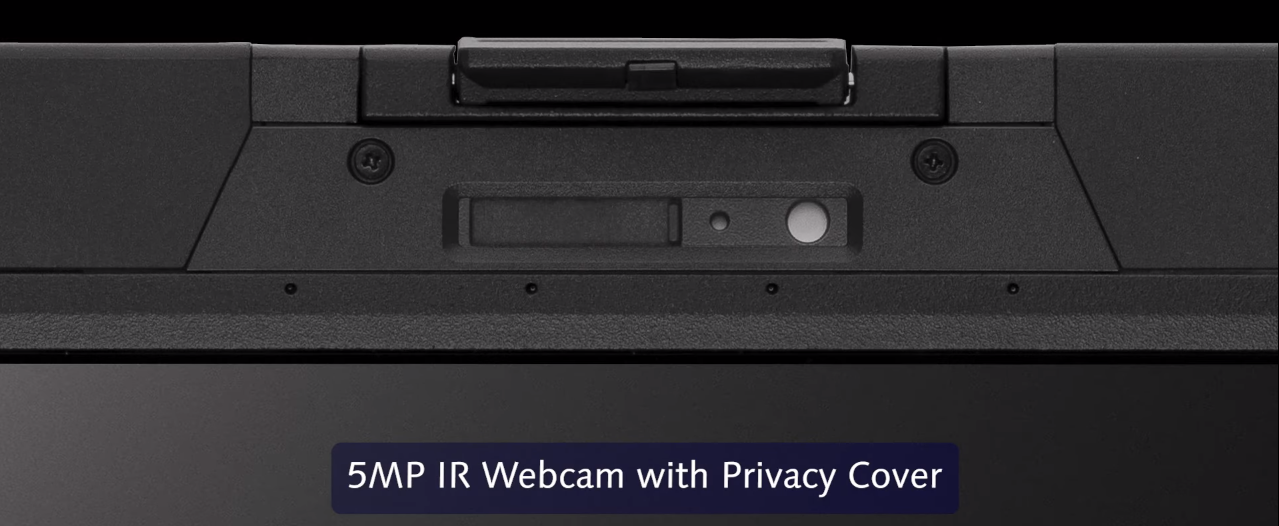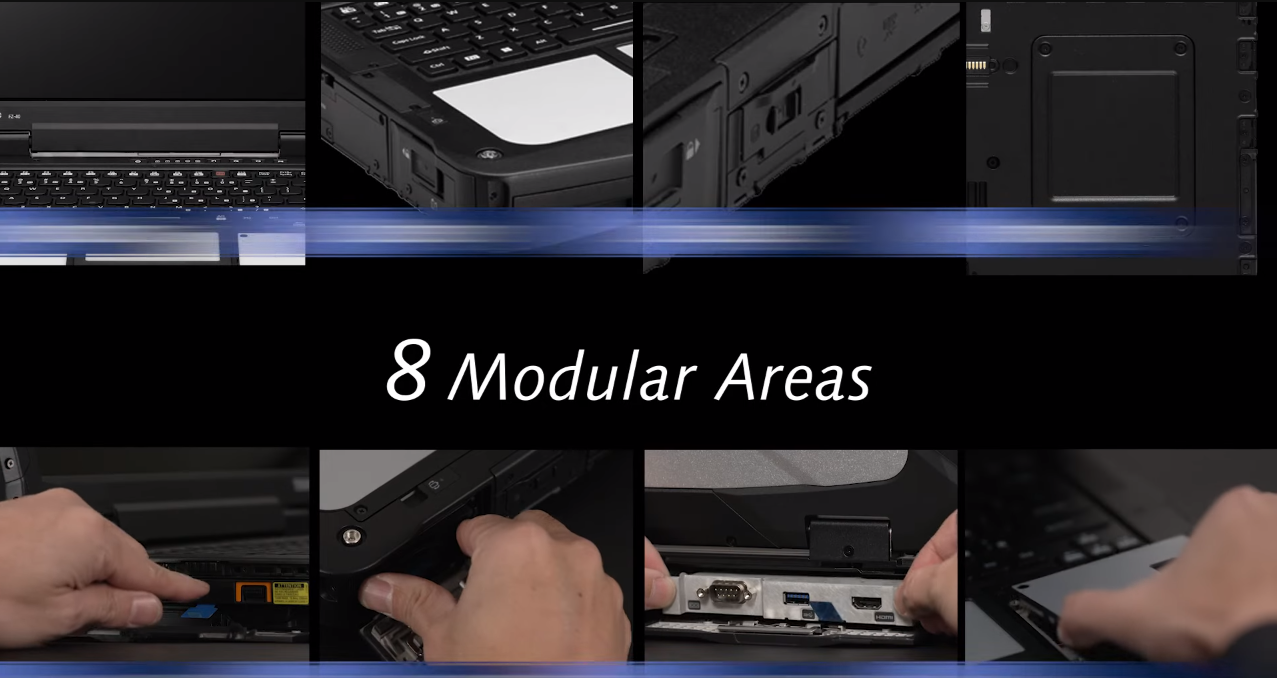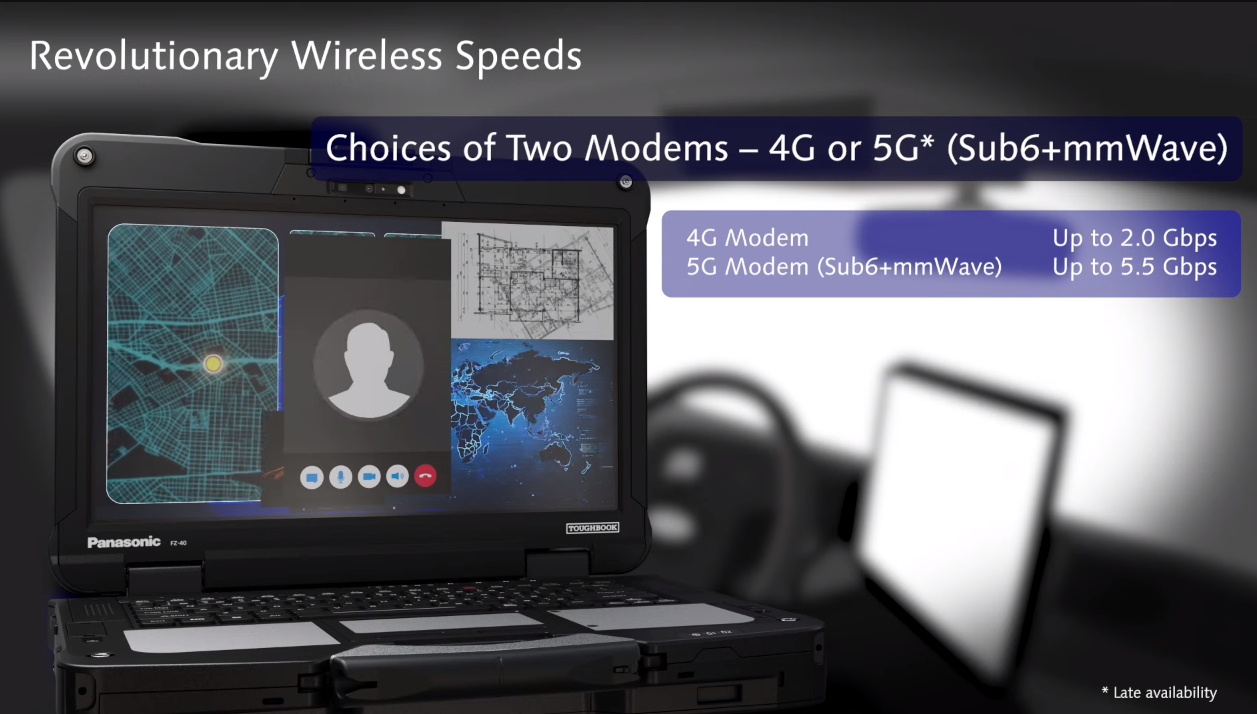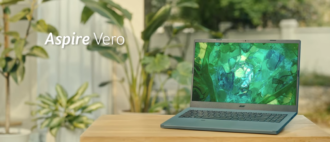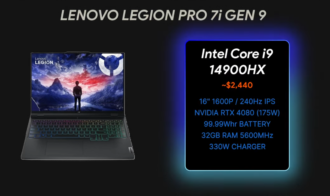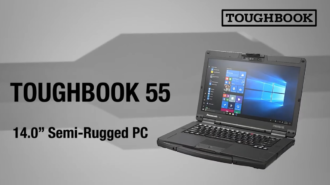Panasonic Toughbook 40 Review
While regular notebooks could be bumped around in the overhead compartment, first responders and soldiers often must take their laptops into dangerous situations. They are built to withstand conditions that would destroy a regular laptop, such as being dropped upon a rock or used in the pouring rain. They are cumbersome, hefty, and pricey. The Getac B360, a 13.3-inch fully rugged laptop, has been replaced as our Editor’s Choice by the Panasonic Toughbook 40 (starting at $4,899), a 14-inch nearly indestructible, ultra-customizable armored data carrier.
Panasonic Toughbook 40 Specs
| Laptop Class | Rugged |
| Processor | Intel Core i7-1185G7 |
| Processor Speed | 3 GHz |
| Native Display Resolution | 1920 by 1080 |
| Graphics Processor | Intel Iris Xe Graphics |
| Wireless Networking | 802.11ax (Wi-Fi 6), Bluetooth |
| Dimensions (HWD) | 2.1 by 13.9 by 11.9 inches |
| Weight | 7.4 lbs |
| OS | Windows 11 |
PROS:
- Superhumanly resistant to harm
- Modularity, in plenty
- Incredibly long runtime with a spare battery
- Forcing oneself onto a keyboard or touchpad is unnecessary.
- Webcam with a high resolution
CONS:
- Massive, Pentagon-style sticker price
- It’s Wi-Fi 6, not 6E.
Price
The Panasonic Toughbook 40 begins at $4,899 and can be purchased from sites like Amazon. For that price, you receive a base configuration with a 14-inch 1080p touch display, 16GB of RAM, a 512GB solid-state drive (SSD), and an Intel Core i5-1145G7 vPro CPU. A more powerful Intel Core i7-1185G7 processor, extra memory and storage, and a broad variety of accessories that may be inserted into the modular expansion bays are all available as paid upgrades from Panasonic. Additional power packs, security card readers, an infrared scanner, a fingerprint reader, and Blu-ray or DVD drives are just a few examples.
Design
The Panasonic Toughbook 40 is such a brick that you must hold one to believe it. When closed, it measures over two inches in thickness and weighs a hefty 7.4 ounces due to its magnesium alloy chassis, heavy-duty plastic, and rubberized bumpers. Before trying this Toughbook, I had never seen one in person. When you see it in person, you will be shocked by how different it is from a regular laptop. You can tell by its size, weight, and sturdy handle that pops out from underneath the touchpad to carry it like a briefcase.
The Toughbook 40 is unlike standard laptops in that it conceals its ports and expansion slots behind closed doors. The latter provides users with great flexibility and adaptability by allowing them to quickly and easily change out alternative “xPAK” accessories and features or slot in another battery for extended excursions away from a power source.
Webcam
The 5-megapixel webcam supports face recognition for Windows Hello logins and has a sliding privacy shutter for added security. It shoots images at a resolution of up to 2,560 by 1,920 pixels with excellent clarity, color, and lack of noise or static, and it comes with four microphones, making it ideal for teleconferencing in noisy settings.
Noise
The Toughbook’s speakers do not produce audiophile-quality sound—the volume seems to flutter and change from moment to moment—but they are loud enough to be heard over sirens and heavy machinery (Panasonic claims a maximum of 95dB). You will not spend much time listening to your MP3s, but there is no bass, and you can hear the overlapping songs.
Keyboard
There are four different illumination colors to choose from, and each of the keyboard’s four programmable shortcut keys can be used to open a different application, such as the system’s configuration interface, or to enter a “concealed mode” that turns off the screen and all LED indicators. A red F11 key can be used with police software to alert the command of an emergency. It has a relatively pleasant typing experience but lacks a numeric keypad and separates Home, End, Page Up, and Page Down buttons (like many laptops, these functions are combined into the Fn key).
It is not as clunky or rubbery as you might anticipate; you feel each keystroke rather than gliding through speed runs, but it is shallow and firm. Similarly, while most laptops use capacitive touchpads that detect electrostatic charges, rugged laptops use pressure-sensitive resistive touchpads. This facilitates their use of gloves but makes them more relaxed with their bare hands. While some rugged laptops’ touchpads required more deliberate touch, the Panasonic’s seemed more like a civilian pad, despite its diminutive size. The two buttons on its left and right provide quick and simple navigation.
Case for Productivity
PCMark 10 is a benchmark created by UL that measures performance in typical business settings. Video conferencing, spreadsheets, word processors, and the internet are all examples of such applications. To evaluate the loading time and throughput of a laptop’s storage, we also perform the Full System Drive test from PCMark 10.
Three processor-centric benchmarks evaluate a computer’s readiness for processor-intensive tasks by utilizing all available cores and threads. While Primate Labs’ Geekbench 5.4 Pro mimics widespread software, including PDF rendering, speech recognition, and machine learning, Maxon’s Cinebench R23 renders a sophisticated picture using the company’s Cinema 4D engine. Finally, a 12-minute video is transcoded from 4K to 1080p using the free software HandBrake 1.4 (faster times are better).

